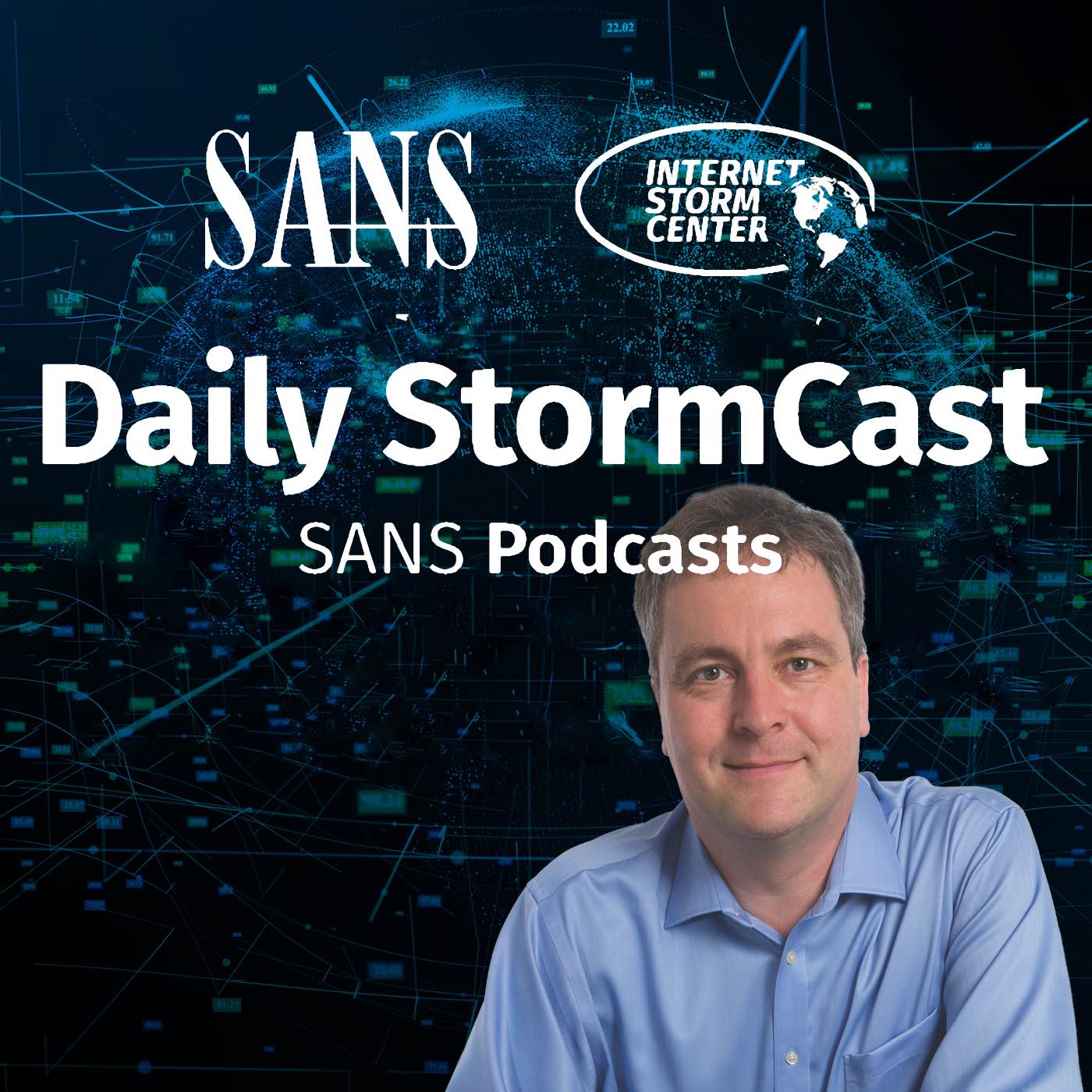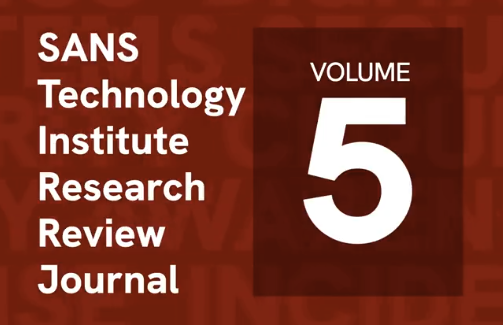Handler on Duty: Didier Stevens
Threat Level: green
Podcast Detail
SANS Stormcast Monday, September 29th, 2025: Convert Timestamps; Cisco Compromises; GitHub Notification Phishing
If you are not able to play the podcast using the player below: Use this direct link to the audio file: https://traffic.libsyn.com/securitypodcast/9632.mp3
My Next Class
| Application Security: Securing Web Apps, APIs, and Microservices | Orlando | Mar 29th - Apr 3rd 2026 |
| Network Monitoring and Threat Detection In-Depth | Amsterdam | Apr 20th - Apr 25th 2026 |
Converting Timestamps in .bash_history
Unix shells offer the ability to add timestamps to commands in the .bash_history file. This is often done in the form of Unix timestamps. This new tool converts these timestamps into a more readable format.
https://isc.sans.edu/diary/New%20tool%3A%20convert-ts-bash-history.py/32324
Cisco ASA/FRD Compromises
Exploitation of the vulnerabilities Cisco patched last week may have bone back about a year. Cisco and CISA have released advisories with help identifying affected devices.
https://sec.cloudapps.cisco.com/security/center/resources/asa_ftd_continued_attacks
https://www.cisa.gov/news-events/directives/ed-25-03-identify-and-mitigate-potential-compromise-cisco-devices
Github Notification Phishing
Github notifications are used to impersonate YCombinator and trick victims into installing a crypto drainer.
https://www.bleepingcomputer.com/news/security/github-notifications-abused-to-impersonate-y-combinator-for-crypto-theft/
Discussion
New Discussions closed for all Podcasts older than two(2) weeks
Please send your comments to our Contact Form
| Application Security: Securing Web Apps, APIs, and Microservices | Orlando | Mar 29th - Apr 3rd 2026 |
| Network Monitoring and Threat Detection In-Depth | Amsterdam | Apr 20th - Apr 25th 2026 |
| Application Security: Securing Web Apps, APIs, and Microservices | San Diego | May 11th - May 16th 2026 |
| Network Monitoring and Threat Detection In-Depth | Online | Arabian Standard Time | Jun 20th - Jun 25th 2026 |
| Network Monitoring and Threat Detection In-Depth | Riyadh | Jun 20th - Jun 25th 2026 |
| Application Security: Securing Web Apps, APIs, and Microservices | Washington | Jul 13th - Jul 18th 2026 |
| Application Security: Securing Web Apps, APIs, and Microservices | Las Vegas | Sep 21st - Sep 26th 2026 |
Podcast Transcript
Hello and welcome to the Monday, September 29th, 2025 edition of the SANS Internet Storm Center's Stormcast. My name is Johannes Ullrich, recording today from Jacksonville, Florida. And this episode is brought to you by the SANS.edu Graduate Certificate Program in Industrial Control System Security. A quick script from Jim this weekend for anybody doing forensics, incident response, something to convert the Unix timestamps in .bash_history files to a more human-readable ISO format. Adding timestamps to .bash_history is obviously useful in incident response. If it's not done by your system, all you have to do is add a hist time format variable to your .bashrc or a similar file. And with that, you basically define the format. It's often defined as a Unix timestamp. Part of this is to make it easy to sort. The file is being written whenever a shell exits. So if you have multiple shells running around the same time, well, these particular commands may not necessarily be in time order as they're being saved to the file. And of course, the usual caveats about this file being potentially manipulated or disabled by an attacker applies. And then we still have to talk about the Cisco vulnerability that I mentioned last week. The vulnerability that had already been exploited. So again, this affects the ASA and firepower devices. Note that exploitation of the devices likely started about a year ago. So I've seen numbers in news articles and sort of mentioned 2 million affected devices. Now note that these are potentially vulnerable devices, not exploited device. I think that distinction sometimes got lost in some of the articles that I've seen. At this point, there's only a very small number of actual exploited devices as far as I've seen. And the exploit itself is not public yet. And from everything I heard is not trivial. So still, you do want a patch, of course. And now there's the raison to find an exploit and make it public for a wannabe like that. But overall, the chances that you were exploited before the actual patch was released aren't that super high. Unless you're sort of knowing something that you would consider yourself as targeted. In particular, by Chinese state-sponsored actor. Now we have a number of write-ups around this. I want to point out CISA's one. CISA also offers its malware next-gen portal to detect infected systems. The way this works is that you create a core dump on your particular Cisco device. And then upload it to CISA for automatic analysis. Now CISA's advice, as always, is focusing on the U.S. federal government. But typically, of course, their advice is well -sourced and well-thought-out. So definitely something that you should consider. As far as uploading malware to the malware next-gen portal goes, you must be registered with the portal. That means login.gov. So this is restricted at this point to U.S. citizens. But you do not have to be affiliated with the U.S. federal government. You just have to basically figure out if that's something that you want to do or not. Not all ASA devices have patches available. There are some affected ASA devices that are end-of-life. And the only option for those is, of course, to replace them with newer models. It is critical you get patching now before we have any more widespread exploitation of this. According to Cisco, affected devices have been found with modified ROM monitor, or short often called ROMMON. This is firmware that is basically sort of the run during boot. And by modifying the ROMMON, the malware is able to persist reboots and also some software updates. However, the specific update released by Cisco in this case will specifically scan ROMMON and apply a fix if it finds it to be modified. A firmware-update.log file is left in that case on disk zero. So if it found something odd with ROMMON, and Cisco recommends that if that's the case, if you see the firmware-update.log file, you must assume the device is compromised. You must change passports, keys, certificates. Remember, we had that issue many times before. For devices like this were compromised. And then even two-factor authentication seats and such were stolen. Not sure the two-factor authentication seat is an issue here with these particular Cisco devices. And Cisco also requests that any user who runs into an infected device does open a ticket with customer support for further help and also advice and analysis of what exactly happened there. Your device is considered vulnerable if it has the VPN web services enabled. So if you don't have the VPN web service enabled, then you shouldn't be vulnerable. Of course, you may have had it enabled in the past or such. That can sometimes be a little bit difficult to figure out and distinguish. I'll add links to the Cisco advisory as well as to CISAs in the show notes. So if you want to read up on some details that either are published, take a look at that. And like I said, this is something that this week you really have to get a handle on whether or not you're vulnerable. Apply the patches and then make sure that you haven't already been exploited. The target group is not necessarily just the government networks. In the past, we have seen some private entities like either suppliers or even law firms in some cases being hit by malware like this. And talk about some more targeted attacks. The next attack is also a bit targeted. And this is the use of GitHub notifications that are being abused. Based on GitHub, if a user is mentioned in an issue, GitHub notifies the user of the issue via email. Sadly, these notifications are customizable enough to make it difficult to distinguish these fraud notifications from other email. Bleeping Computer is reporting that the latest wave of these attacks was used to impersonate the startup accelerator YCombinator. And the target here apparently were crypto coin related companies. And the lure consists of an email notifying the victim of being accepted for funding from YCombinator. I think they offered something like $15 million. That, of course, entices most startup founders and such to click on those emails. And in this case, the email was then led to a YCombinator lookalike website that then made them install some malware that trained their cryptocurrency accounts. This is something that's always a little bit hard to sort of put into awareness presentation such that you have a little bit of more targeted attack like this. Where they're using systems like GitHub that many of these founders and people associated with startups are more or less trusting. And then, of course, YCombinator being something that many of them have probably applied for funding for. Well, and that's it for today. So thanks for listening and thanks for recommending, for liking this podcast. Also, thanks for anybody who is leaving a good comment. That's it for today and talk to you again tomorrow. Bye.











